Click on any photo to see a larger photo.
Use your browser´s "Back" button to return to this page.
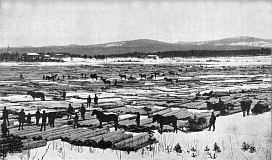
|
Trees were harvested in the winter and stored on the ice until spring, when the river would carry the logs downstream.
|
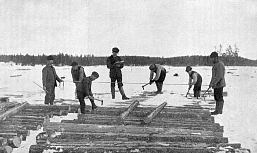
|
Logs are measured, to make sure loggers get a fair price for their work.
|
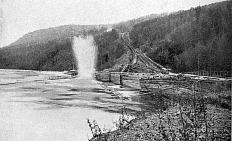
|
Logs cut on a hillside make a huge splash after sliding down to the river in a log chute.
|
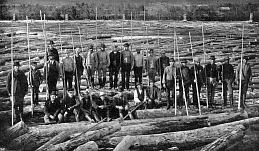 |
A crew with the most dangerous job in river driving. When a logjam occured, these men would clamber over the logjam, identify the offending log and break it loose with their long poles. As the logs started rushing downstream again they had to jump across the moving logs to safety on the shore (breaking up a logjam with explosives was frowned upon, as it might damage valuable timber... ). |
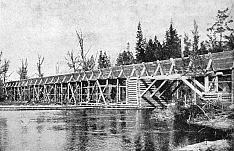
|
Flumes like this were used to bypass rapids which would damage the lumber, and to connect lakes when no suitable river was available. A dam would ensure an even waterflow.
|
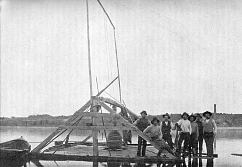
|
With winches like this, huge log rafts could be towed across a lake by muscle-power alone.
|
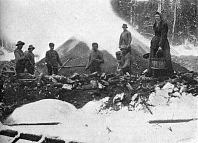 |
Logging and iron making went hand in hand in Sweden. Early blast furnaces consumed vast amounts of charcoal, so they were spread out in the forests to ensure a steady supply of charcoal. Logging waste was often made into charcoal, and each iron mill was surrounded by an army of tenant farmers, who paid their rent in charcoal, cutting small trees especially for this in winter and charring the wood in primitive kilns like this.
Small logs were placed vertically in a conical pile, covered with earth to limit the air supply, and set on fire. As the wood turned into charcoal it had to be constantly tended. If too much air would get in, the whole pile would go up in flames. |

|
Primitive log cabins in the forest were used by loggers, but mostly by the men tending the charcoal kilns, as they had to be close by watching the kiln through the firing period. My distant relative Dan Andersson, one of Swedenęs most popular poets, wrote about the lonely life of these men, as he grew up in the forests of Swedenęs old ironmaking heartland.
|